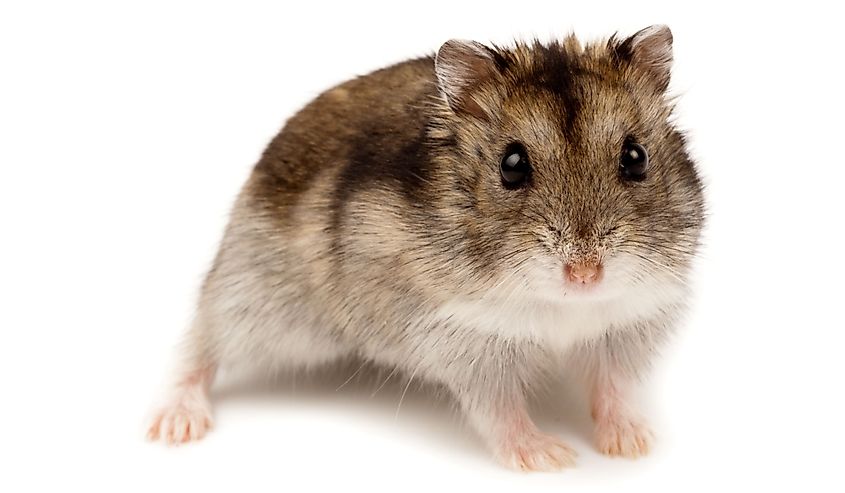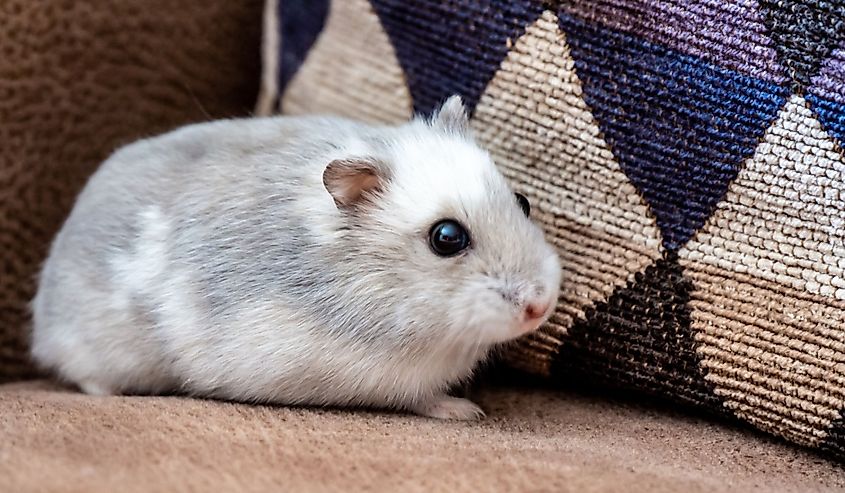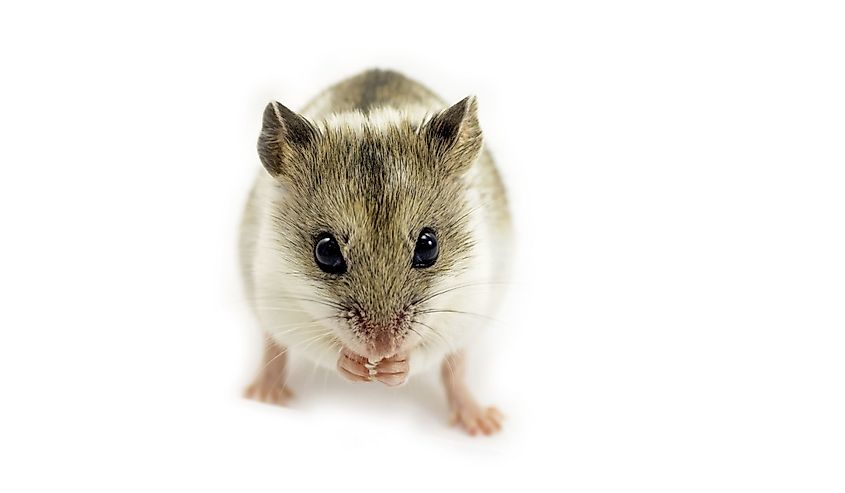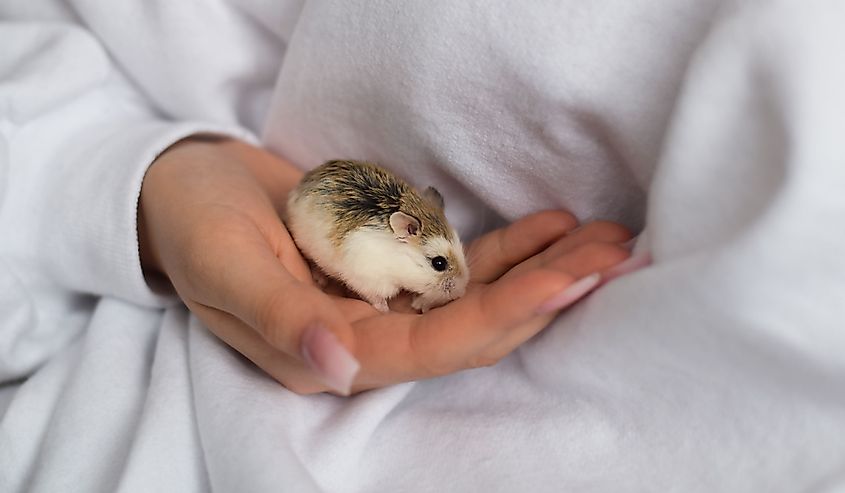
Where Do Hamsters Live In The Wild?
Hamsters are cute, quiet, inexpensive, and relatively easy to care for. They act as a valuable pet, somewhere between a goldfish and a dog/cat, for parents trying to teach their children about responsibility, and they are the perfect solution for career-oriented adults who still crave companionship. So, it is no wonder why so many households have adopted these lovable rodents. It may seem strange to picture them anywhere other than on a spinning wheel within a modest cage, but hamsters do indeed thrive in the wild, and their domain is far-reaching.
Species Variety and Habitats
There are 20 or so (authorities disagree slightly) species of hamsters living on this planet. They can be divided into eight genera, all of which stem from the subfamily Cricetinae within the family Cricetidae. Collectively, they span much of Europe, the Middle East, and Asia (save for its southern aspects) - totaling over 30 countries in the process. Most hamsters gravitate to softer landscapes, such as grasslands, farmlands, and other fields, meadows, and semi-arid or even desert environments. Though there are exceptions (more on this in a moment), they tend to avoid rocky regions. This is because hamsters are expert diggers who build elaborate burrows. These subterranean labyrinths provide protection from birds of prey, snakes, and larger mammalian predators, as well as a place to store food (which they transport down in their puffy cheeks) and sleep until the cover of darkness (for, you see, wild hamsters are nocturnal).
The Five Commonly Domesticated Species of Hamsters
Now that we know where wild hamsters tend to dwell let's take a closer look at the five most common varieties of domesticated hamsters. Unlike many dog breeds that only exist because of artificial selection, the hamsters we have in our homes are descended from extant species.
Syrian Hamster

The most popular breed of pet hamster is, ironically, one of the rarest species in the wild. In fact, only three scientific expeditions have successfully uncovered Syrian (aka "golden") hamsters (Mesocricetus auratus). As the name suggests, this species can be found in (northern) Syria and southern Turkey. It was first documented in 1797, though the journey to domestication did not begin until 1930 when zoologist Israel Aharoni dug up an adult female and her eleven pups. They were nesting eight feet beneath a wheat field near the ancient city of Aleppo. Though several died en route, a stable breeding population was still delivered to Hebrew University in Jerusalem for medical research and Aharoni's personal taxonomic goals. Because of how quickly they multiplied (as opposed to the Chinese hamsters, who were decidedly less fruitful under laboratory conditions), it was not long before subsequent generations were brought to additional universities, zoos, and, of course, people's homes.
The Syrian hamster became a popular pet in the United Kingdom beginning in the late 1930s, and caught on in North America in the 40s and 50s. At this point, you may be wondering how such a long lineage of domesticated hamsters spawned from just a handful of siblings. Well, another expedition to Syria was able to collect an additional population of hamsters to add to the gene pool. However, inbreeding-related health conditions do tend to affect pets.
Campbell Russian Dwarf Hamster

The next most commonly acquired species of pet hamster is the Campbell Russian dwarf hamster (Phodophus Campbelli). Named after Charles William Campbell, who discovered the species in Mongolia in 1902, this hamster is also native to China, Russia, and Kazakhstan. Generally speaking, it can be found throughout the steppes and semi-arid regions of Central Asia, as well as the Altai Mountains. For the first three years after its discovery, the Cambell Russian dwarf hamster was considered the same species as the winter white dwarf hamster (who we'll meet next) but can now be distinguished by its narrow dorsal stripe.
This species was transported to the UK In the 1960s, initially only for medical research purposes, but by the 1970s, pet owners took notice. North American households first got their hands on this hamster in the 1980s.
Winter White Dwarf Hamster

Another species of hamster that has become a beloved member of many Western households is the winter white dwarf hamster (Phodopus sungorus), aka the Djungarian hamster, Siberian/Russian dwarf hamster, and many other names. This species was first cataloged in 1773, though it was initially misidentified as a mouse owing to its petite, ball-shaped stature and soft coloration. In the wild, these hamsters can be found in Siberia, Mongolia, Kazakhstan, and Manchuria (i.e., Northeastern China/Eastern Russia), covering such habitats as fields, meadows, birch stands, and some semi-arid regions of Central Asia.
The first breeding population was caught in 1968 in Western Siberia and transported to the Max Planck Institute in Germany. From there, descendants were funneled into the UK's pet industry throughout the 1970s. The following decade, winter white dwarf hamsters made their way over to North America but didn't become popular pets until the 1990s. This breed is more social and docile in captivity than its larger golden cousin.
Chinese Hamster

Chinese hamsters (Cricetulus griseus) originate in the desert fringes, steppes, and (surprisingly) rocky terrain of Mongolia and (you guessed it) China. Captured in 1919, once again for medical purposes, their adorable appearance soon caught the eye of prospective pet owners. The first pet market that the Chinese hamster entered was in Beijing. Internationally, the first breeding colony took hold at Harvard in 1957-58. Stateside medical research then expanded on this species in the 1960s before eventually breaking onto the American pet scene.
Roborovski Dwarf Hamster

Our fifth and final species of wild hamster that has thus far been domesticated is named after Lieutenant Roborovsky, who discovered this, the smallest of the three hamster species within the Phodopus genus, in 1894. The Roborovski dwarf hamster (Phodopus roborovskii) can be found in the deserts of Central Asia, namely China, Russia, and Mongolia. Specimens were transported to the London Zoo in the 1960s, but this breed of hamster did not become available as a pet in either the UK or North America until 1990. Since it is the newest species to become available as a pet, the Roborovski dwarf hamster can be more difficult to obtain.
A Word on the European Hamster
With the United Kingdom and North America taking up so much of the hamster pet market, one might wonder why the European hamster (Cricetus cricetus), aka "the common hamster," has not had its own era of domestication. Simply put, it is too aggressive. Most wild hamsters are territorial, but European hamsters will bite at anyone who tries to touch them, even if they have been bred in captivity. Not exactly a great candidate for little Timmy's first pet.
Another aspect of this species that doesn't lend itself to the modern-day pet trade is its catastrophic population decline. Whereas it once roamed the grasslands of much of Europe and Western Asia, now its numbers have plummeted by anywhere from 75% in Eastern Europe to 90% in France. As such, the IUCN was forced to update the European hamster's designation to critically endangered. Some reasons cited for this hamster's demise include climate change (which disrupts their hibernation), light pollution (remember, hamsters are nocturnal), and agriculture. The latter not only fragments habitats, but the over ingestion of mono-crops, namely, corn and wheat, leads to malnutrition and alarmingly high rates of infanticide. Mothers are known to cull their litters when distressed (a behavior that catches some pet owners by surprise), but something about the vitamin B3 and protein deficiencies from the corn-centric diet exacerbates this destructive habit.
As their typical environments shrink or change, European hamsters have begun to seek refuge in urban parks and gardens. This may be a viable alternative for the rodents, but unfortunately, it gives them the reputation of a pest in the eyes of city-dwelling humans. There is also the issue of hygiene and disease transmission that occurs whenever large numbers of small rodents move through an area densely populated by humans. Thankfully, there are programs in place across Ukraine, France, Belgium, Poland, and Germany in which captive-bred European hamsters are being reintroduced into their native habitats.
Why Wild Hamsters Are Important
Wild hamsters are a keystone species. National Geographic says they have a "...disproportionately large effect on the communities in which they occur." For instance, hamsters are a vital source of food for many predators, and because of their food-hoarding ways, they inadvertently help plants propagate by distributing their seeds in fresh areas. Because of unpredictable trickle-down effects, no species within an ecosystem is expendable, but wild hamsters, in particular, might be sorely missed if they continue their slide into extinction.
Final Thoughts
As hard as it may be to envision the ancestral wolf within a poodle, it is perhaps even stranger to imagine your beloved hamster aggressively fending for itself in the wild. Nevertheless, these beady-eyed rodents occur throughout large portions of the Eastern Hemisphere in various ecosystems. Seeing as they spend their days deep underground, real-life encounters are not especially common, but take solace in knowing that your little Abby or Arnold have cousins out there who roam wild and free. They may not have a cool wheel to run on or a considerate human to give them treats, but provided we are mindful of our impact on their natural environments, wild hamsters are highly capable and valuable animals.











